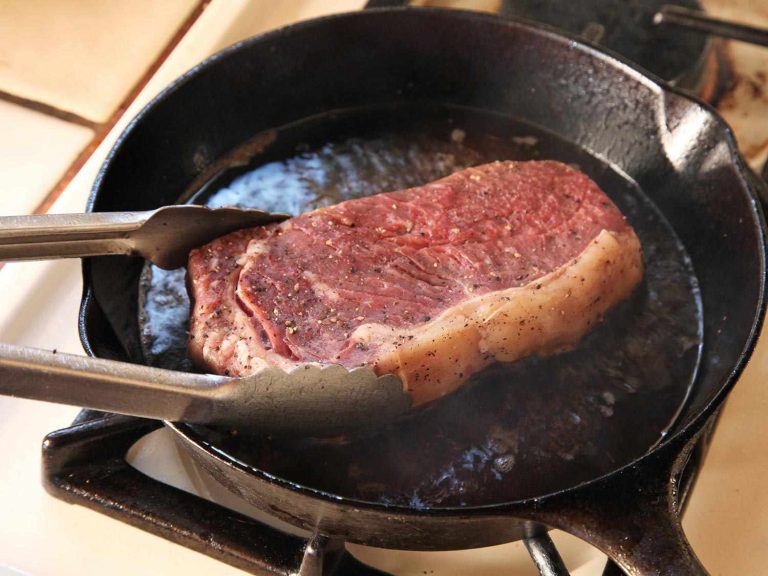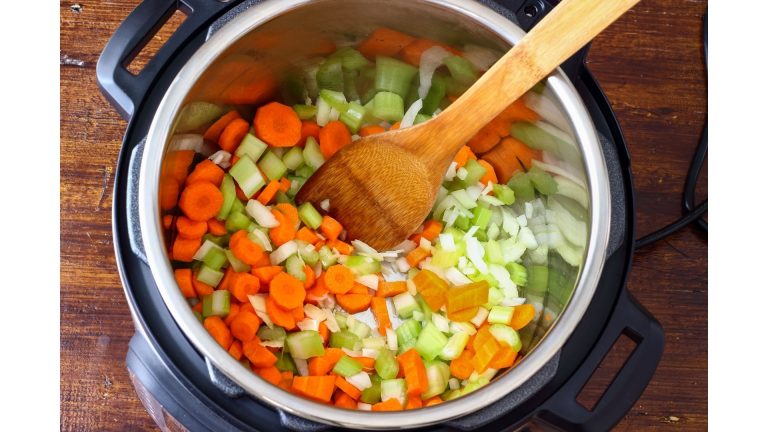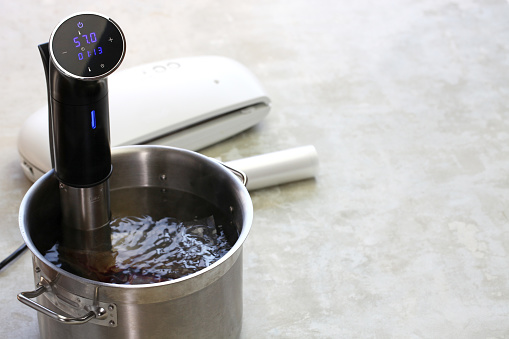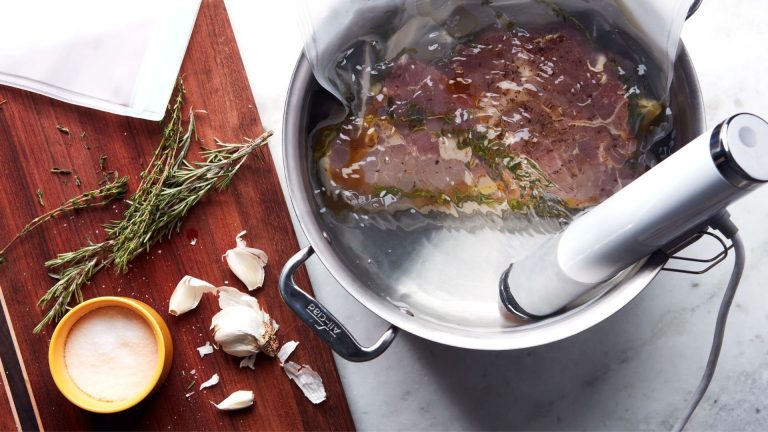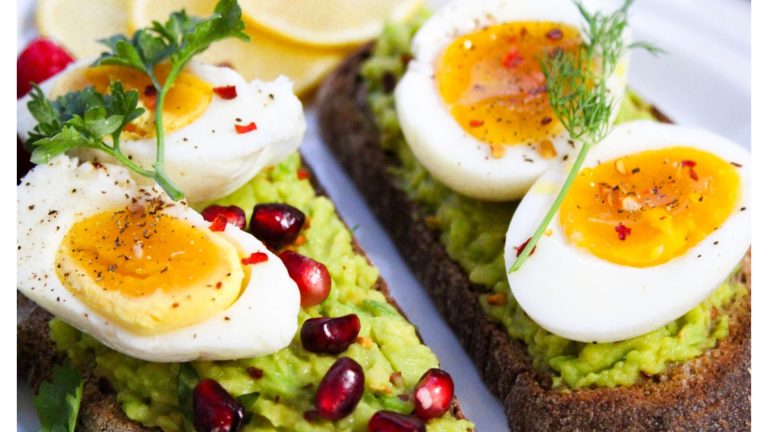How Long Can You Leave Steak in Sous Vide?
Cooking steak sous vide is a great way to get the most out of your steak—and your time. If you don’t know what that means, then it’s time to find out.
Sous vide steak may be left in sous vide for up to 72 hours. Steak tastes best after about 48 hours of cooking; however, it may be eaten at any time within that timeframe.
A sous vide machine is an immersion circulator, which allows you to cook food at precise temperatures for extended periods of time.
The key to cooking sous vide is that the food is sealed in a bag and placed in a water bath, where the temperature is maintained precisely.
The result is that food can be cooked at a consistent temperature for long periods of time. So how long can you leave steak in sous vide? That depends on how you want to cook it.
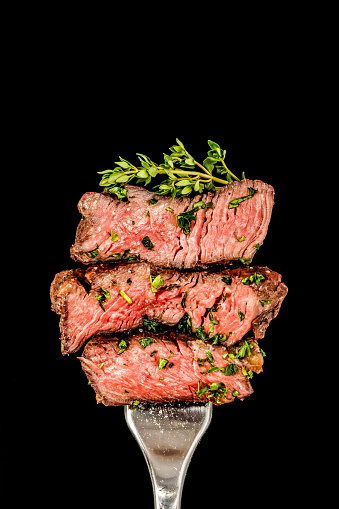
Table of Contents
What is Sous Vide Steak?
Sous-vide steak is a French process of cooking a steak in an air-tight plastic bag, fully submerged in a water bath that is held at a constant temperature by a sous-vide device.
This may sound daunting and complex, but it’s actually a really straightforward process without any learning curve.
The sous vide advantage allows you to perfectly cook a steak that is uniformly cooked from top to bottom and edge to edge, without any varying level of doneness.
The sous vide method allows you to precisely control your steak’s internal temperature, by setting the water (or your sous vide device) to the desired internal serving temp.
The science prevents you from bringing your steak a degree higher than the water’s temperature, making it impossible to overcook your fancy, expensive cut of meat.
See Also: How to Sous Vide in an Instant Pot?
Why Sous Vide Your Steak?
Steak is one of the most delicious foods in the world. It is also very expensive. By sous-viding your steak, you can make it taste like it was cooked on a grill or in the oven, but without all the mess and expense.
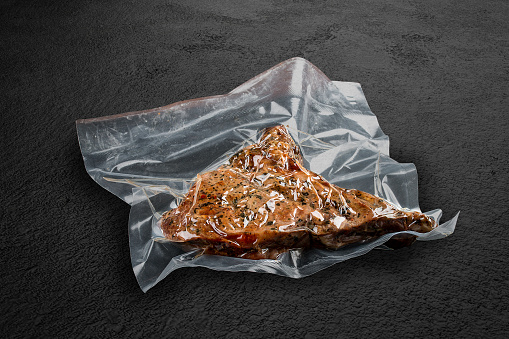
Does Timing Matter for Sous Vide Steak?
With sous vide cooking, once you set your temperature and add your meat, let it sit there indefinitely, with no change in quality. I even believed that myself a few years back.
Even at low temperatures, there are things going on. Enzymes are breaking down proteins. Chemical reactions are slowly taking place.
To figure out exactly what happens when you cook steak sous vide for extended periods, Cook identical steaks at 130°F (54°C) for periods ranging from one hour all the way up to 48 hours.
I found that the most important differences typically occurred between the four- and 24-hour marks.
Take a look at these slices of steak that are cut off and torn:
As seen, the steak cooked for just one-hour stretches and pulls when you tear it. This gives the steak a pleasant amount of chew. It’s still tender, but it tastes like a steak.
By the time we hit four hours, that chew has been reduced a bit. Connective tissue has broken down, and individual muscle fibrils split apart easily instead of sticking together, though a four-hour steak is still pretty decent.
Head all the way over to the 24-hour mark or beyond, and your steak ends up nearly shredding as you pull it apart. It’s a strange mouthfeel:
The steak is still plenty juicy (a steak cooked 24 hours loses barely any more moisture than a steak cooked for one hour), but the meat shreds instead of offering resistance or chew.
For the best results, I strongly suggest following the temperature and timing charts below. I’ve included two separate charts to cover different categories of steak cuts.
How to Select the Right Temperature for Sous Vide Steak
The doneness of a steak is by and large determined by the maximum internal temperature it reaches during cooking. For instance, so long as a strip steak does not rise above 130°F (54°C), it will never cook beyond medium-rare.
With traditional cooking methods, there is a very short window of time during which your meat is perfectly cooked.
A minute too long will mean overcooked meat. With sous vide cooking, on the other hand, that window of time is stretched into hours, which means your steak will be hot and ready to go whenever you’re ready to sear and serve it.
Temperature can have a major impact on the juiciness and texture of a steak. Here, I’ve collected juices expelled by three nearly identical steaks cooked to different temperatures:
The one cooked to 160°F (well-done) lost more than 10 times as much juice as the 120°F rare steak. Additionally, with the well-done steak, you can see a distinct layer of rendered fat floating on top of the juices.
I recommend cooking steak in the rare-to-medium range, so that you minimize juice loss while also keeping those fats inside the steak where they belong, adding flavor and juiciness to each bite.
Here’s a rough breakdown of how steaks feel at different degrees of doneness.
Rare sous vide steak (120°F/49°C):
Your meat is still nearly raw. Muscle proteins have not started to contract much and will have a slippery, wet texture.
Chewier cuts, like hanger or flap meat, will be particularly tough at this stage. Fat has not yet started to render, so fattier cuts will have a waxy texture.
I recommend cooking only very lean, tender cuts, like tenderloin, to rare.
Medium-rare (129°F/54°C):
Your steak is still nice and red, but muscle proteins have begun to tighten and firm up. You lose a bit of juice due to this tightening, but what you lose in juice, you gain in tenderness.
Medium-rare steaks have a cleaner bite to them: Instead of muscle fibrils mushing and slipping past each other, as they do with very rare steaks, they cut more easily between your teeth.
I recommend medium-rare for all types of steaks, though steaks particularly high in fat benefit from being taken closer to medium.
Medium sous vide steak (135°F/57°C):
Your steak is a rosy pink throughout and has lost about four times more juices than a rare steak.
With a well-marbled piece of beef, however, the rendering, softened fat should more than make up for this extra juice loss.
Coarsely textured cuts, like hanger, skirt, and flap meat, also become firm and juicy at this stage. I recommend cooking very fatty or coarse pieces of beef to the cooler side of medium.
Medium-well sous vide steak (145°F/63°C):
Your steak is well on its way to dryness.
At this point, you’ve lost nearly six times as much juice as a rare steak, and the meat has a distinctly cottony, grainy texture that no amount of excess lubricating fat can disguise.
If you must have your meat cooked medium-well, I suggest using very rich cuts, like short rib, skirt steak, or hanger, which suffer less than finely textured cuts, like ribeye, strip, or tenderloin.
Well-done sous vide steak (156°F/69°C+).
Some people like their meat well-done. However, there is no real reason to use a sous vide precision technique if you like your steak well-done. Just grill or pan-roast until it’s as done as you like it.
How to Sous Vide Steak
- Season the steak liberally with salt and pepper. Pair with fresh herbs such as rosemary and thyme and whole garlic cloves.
- Add steak, herbs, and aromatics to a sealable freezer bag and remove air from the bag using a vacuum sealer or the water displacement method.
- Sous vide in a plastic container or stockpot full of water (fully submerged) at the desired temp for 1-4 hours.
- Finish with a quick reverse sear in a cast-iron skillet or stainless steel pan with additional herbs and aromatics. Serve immediately.
See Also: How to Keep Sous Vide Bags Submerged?
Does Sous Vide Steak Need to Rest?
No, but if you are cooking steak, you want to make sure that it is done properly. This is why you use an instant read thermometer to make sure that your meat is cooked all the way through.
Can Sous Vide Frozen Steak?
Yes, you can! You just need to be careful when cooking frozen steak because they tend to stick to the pan.
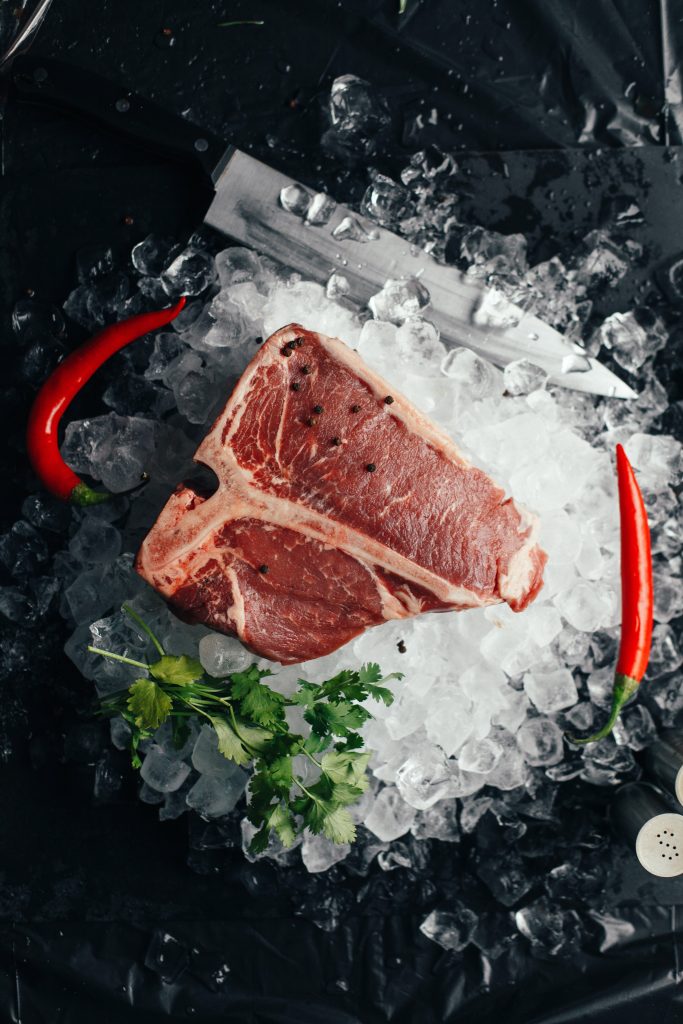
Steak cooking sous vide for longer than the maximum time recommendations?
If you want to cook steak sous vide, you should be sure to use an immersion circulator or a sous vide water bath. Cooking steak sous vide for more than the recommended amount of time will cause the steak to become tough.
Frequently Asked Questions
How long can I leave steak in sous vide?
You can leave steak in sous vide for up to 24 hours. After that, it will be tough.
How do I know if the steak is done?
The best way to know if the steak is done is to use an instant read thermometer. When you stick the thermometer into the steak, it will tell you when the steak is done.
How do I remove the steak from the bag?
When you’re ready to eat the steak, pull the bag out of the water and let the steak sit on the counter for a few minutes. Then, take the steak and put it in a bowl or on a plate and cut it into slices.
Conclusion
In conclusion, you can cook steaks for as long as you like, but there are a few things you should know.
First, you can’t cook steaks for too long, because it will toughen up the meat.
Second, if you cook steaks sous vide for too long, they will dry out.
Third, you should remove the steaks from the sous vide bath when they reach the right temperature, otherwise they will be overcooked.

Foodie and a passionate cook, I am here to share all of what I know about cooking, kitchen, and food prepping.
Follow me for delicious and healthy recipes.

